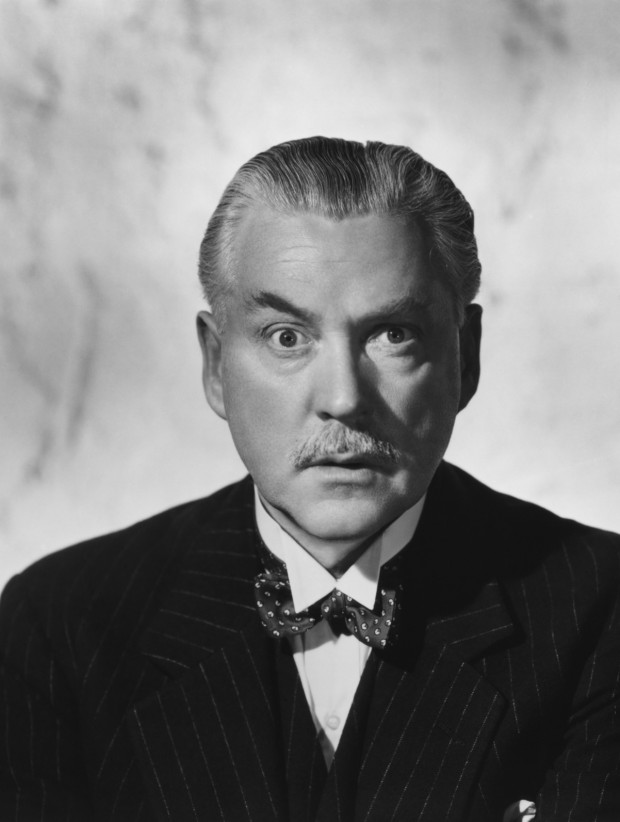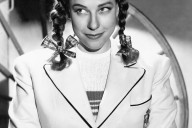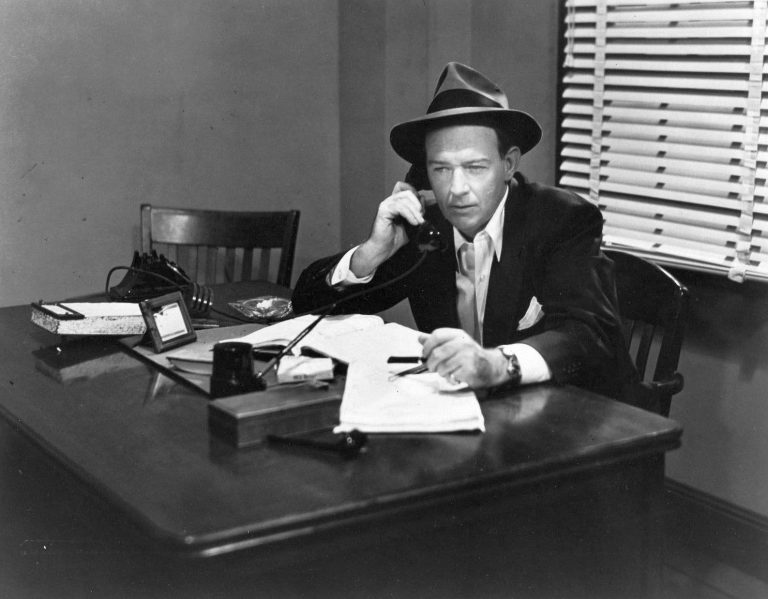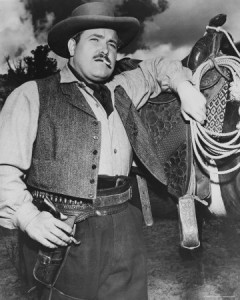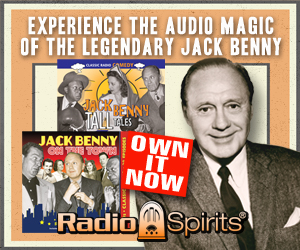By Elizabeth McLeod
Scratch the average American and you’ll find an Anglophile — from Charles Dickens to Doctor Who, statesiders have always nursed a fondness for the cultural products of the Green and Pleasant Land. But they’ve also developed, over the decades, a certain rose-covered image of English life and the English people, a stereotype that has little to do with the modern, diverse country that is Great Britain in the 21st Century. One of the most enduring stereotypes is that of the stout, walrus-moustached jolly old codger, full of “by Jove,” “my dear chap,” and all the other traditional expressions of jolly old Englishness. The living embodiment of that figure is William Nigel Ernle Bruce.
Nigel Bruce came by his demeanor naturally — he was the son of a minor nobleman, his mother the daughter of a decorated artillery officer. Perhaps his lifelong embodiment of Englishness had something to do with the fact that he wasn’t actually born in England! He entered the world one day in 1895 when his parents were vacationing in Mexico.
A young man of his station was expected to follow a proper path in life, its mileposts charted out well ahead. One of these key mileposts was military service. The First World War conveniently provided an opportunity for this, but the results were devastating — young Nigel was wounded in combat and nearly lost a leg. It took several years for him to regain the ability to walk, and he was convinced that his was not to be a military life.
Like many young men of his social set, Nigel had a fondness for the stage and for stage folk. He offered his attentions to attractive young ladies of the theatrical profession, and eventually tried his hand as an actor himself. He enjoyed the work, and he enjoyed a young woman named Violet Campbell even more, a popular actress who would become his wife. He quickly became a touring favorite, a traveling character actor with a specialty in portraying pleasant young gentlemen of somewhat dim aspect, the sort whose monocles always seemed to be dropping into their drinks, the sort who greeted every setback with a cheerful “Right ho, then.” He became a deft comic performer, skilled at the little bits of humorous business that delineated the character without overwhelming the performance in broad, obvious schtick.
There’s always a place for a good character actor in the movies and, like so many good character actors, Nigel Bruce eventually found his way to Hollywood. The arrival of talkies meant plenty of work for a stereotypical English gentleman, and whenever the scene was British, you could be sure to find Nigel Bruce somewhere among the cast. As he moved into middle age, he grew even more distinguished, his moustache tinged with grey, his midsection filling out, his voice taking on even more of the deep, guffawing tones Americans liked to associate with lovable old British gents. He was good for comic relief in otherwise dramatic films, he was good for broad laughs in out-and-out comedies, and he was equally good in straight dramatic parts.
He might have spent the rest of his career in such roles but for one such part that stood out above all the others. Sherlock Holmes had never been a stranger to the screen, but when Twentieth Century-Fox decided to mount a new, big-budget adaptation of The Hound of the Baskervilles, Nigel Bruce — everybody’s favorite fussy Englishman — was the perfect choice for Dr. Watson, opposite the glossy, hawk-faced Basil Rathbone as Holmes. The casting was inspired. The faces and voices were ideal, and the actors seemed quickly to become the characters. The film was both a popular and creative hit, and a sequel proved equally successful. The success of those two films meant that it was time for Sherlock Holmes’ return to radio
The most famous of Consulting Detectives had been a fixture on the networks since 1930. Craggy-voiced stage actor Richard Gordon had been the most successful radio Holmes, opposite Leigh Lovell as Watson. Those early broadcasts established a familiar, regular pattern — each episode was presented as the recollection of the now-elderly, retired Watson, as told to the program announcer beside a comfortable evening fire. Gordon and Lovell had both moved on by 1936, however, and the series had trailed off at the end of that year. But three years later, Rathbone and Bruce stepped into the roles and gave the series new life. The same old “let’s see what story Dr. Watson has in store for us tonight” format returned, and Bruce shone in these introductory comments, coming across as a delightful jolly old Grandpa figure as he welcomed the audience into his home for their weekly date. And, once the stories began, Watson was the ideal radio sidekick, feeding lines to his leading man, and never threatening to outshine the hero.
This latter point proved a sticky one for hard-core fans of the Holmes stories. In print, Sir Arthur Conan Doyle had established Watson as a reasonably intelligent, perceptive man who seemed less brilliant only by comparison to Holmes himself. He may have missed important clues, only to have them pointed out by the great detective, but he did not fumble or bumble or harrumph in the manner of the movie and radio Watson. But these were the complaints of the serious, devoted fans, the 1930s equivalent of the armchair critics who populate internet discussion forums. The general public loved Rathbone and Bruce as Holmes and Watson. They became, and remain today, the definitive, default radio versions of the characters for American listeners. Every Holmes who would follow would be compared to Rathbone, and every Watson would be compared to Nigel Bruce.
Bruce loved playing the role, and he continued to do so until 1946. After disputes with the Conan Doyle estate ended the Fox film series, the property moved to Universal Pictures, where a long string of Holmes and Watson adventures unspooled across the war era. Many of the films transposed the characters into a modern setting, where Holmes and Watson matched wits with Nazis and other such contemporary foes. But, the radio series remained rooted in Conan Doyle’s canon, with original stories “suggested by” incidents in the published tales, and the Victorian-Edwardian setting firmly preserved. The series might have run indefinitely, but Rathbone decided he’d had enough in 1946, and moved on to other projects. Nigel Bruce elected to continue for another season, and for his trouble received star billing and a substantial raise. Actor Tom Conway came aboard to replace Rathbone as Holmes when the series resumed for the fall season.
All was not pleasant behind the scenes, with the series writing staff constantly at odds with the producer. Tensions ripped at the program throughout that season, and Bruce no longer found the experience enjoyable. At the end of the season, he gave his last performance as Watson, and an era came to its finish.
Nigel Bruce was still a reasonably healthy man, in ripe middle age, and he remained a popular presence on the postwar screen in the same old lovable-Englishman parts he’d been playing for thirty years. He was the unofficial leader of the British expatriate colony in Hollywood, as popular with his colleagues as he was with the public, and his death in 1953, the result of heart failure, came as a shock to filmgoers and radio fans, for whom Jolly Old England would never again be quite so jolly. But his body of work survives, with his radio work opposite Rathbone and Conway as lively and engaging to listeners today as it’s ever been.
Copyright 2014 Elizabeth McLeod and RSPT LLC. All rights reserved.

